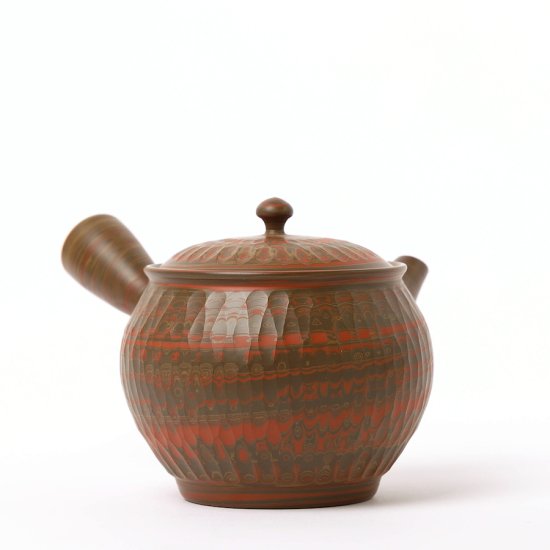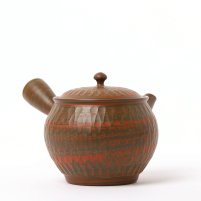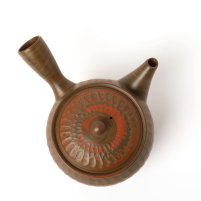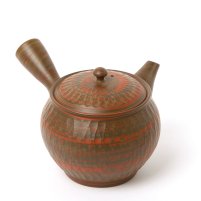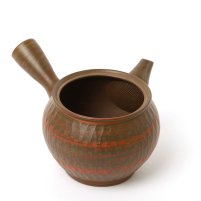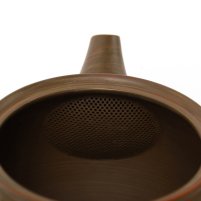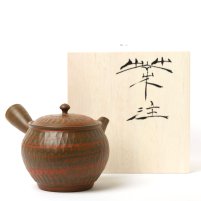Tokoname-yaki 常滑焼
Pottery has been produced in the city of Tokoname, Aichi prefecture, since as far back as the 12th century, and since 1976 has been protected as a traditional craft of Japan. Tokoname was the site of the largest and oldest of the legendary Six Ancient Kilns of Japan and is celebrated for its iron-rich shudei clay that turns red after firing. When fired a second time in a reduction oven, the red shudei turns black – the other characteristic colour of Tokoname-yaki. Traditional Tokoname kyusu teapots are unglazed on the inside, allowing the tannins in the tea to react with the iron in the clay body, which is said to reduce astringency and highlight the sweetness of green teas. Another key feature of these kyusu are the perfectly fitting lids, which are ground into the clay body after firing in a technique known as suriawase.



